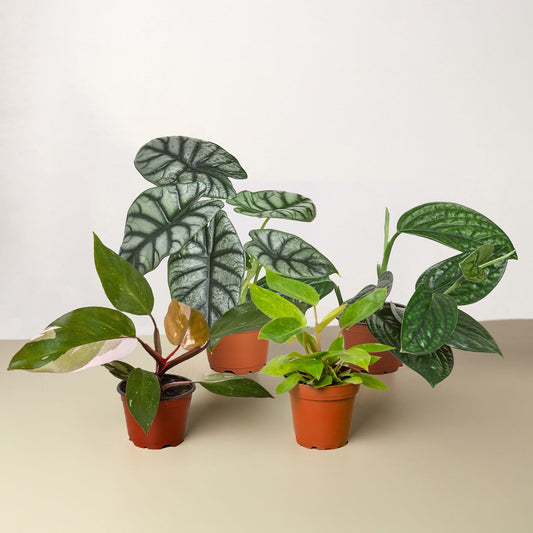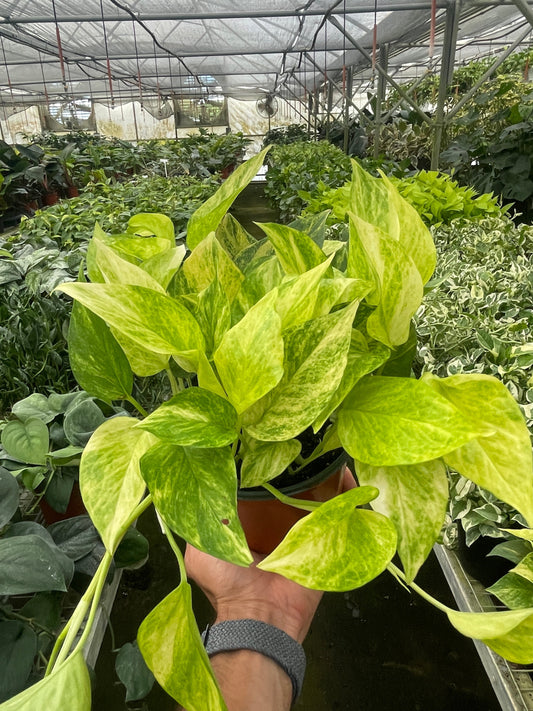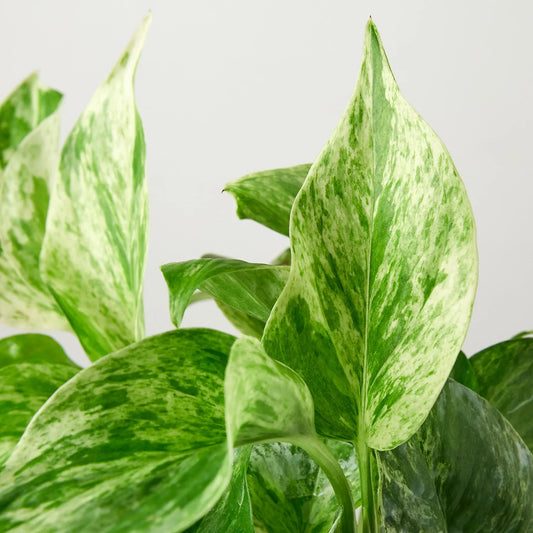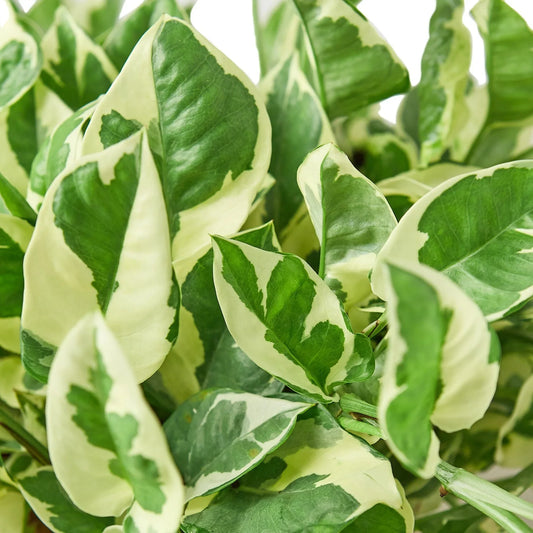19 Common Problems With Ficus
Cafe Planta Team
Your ficus tree may seem like the perfect low-maintenance addition to your home, but it can sometimes throw a tantrum if its needs aren't met just right. Don't worry—whether you're dealing with dropping leaves, weird pests, or mysterious spots, you're not alone. Time to roll up those sleeves and get to know the quirks of your leafy companion.
In this article, we'll chat about some of the most common problems you might face with your ficus. From yellowing leaves to those sneaky pests, we’ll cover what might be going wrong and how to help your plant feel more at home. So, let's get started on making your ficus thrive!
1. Leaf Drop Drama
One of the most common issues ficus owners face is leaf drop. It’s like their way of throwing a fit if something's off. But what could be the culprit?
Ficus trees are notorious for shedding leaves when they experience stress. This stress can come from various factors, such as:
- Environmental Changes: Moving your ficus to a new location can cause it to drop leaves. They like stability, so try to keep their environment consistent.
- Temperature Swings: Ficus trees don't appreciate big temperature changes. Keep them away from drafts, heaters, or air conditioning vents.
- Watering Woes: Both overwatering and underwatering can lead to leaf drop. Make sure the soil dries out slightly between waterings.
If your ficus starts shedding leaves, take a moment to assess its surroundings. Has anything changed recently? Maybe you rearranged the room or the seasons shifted. Once you identify the source of stress, you can make adjustments to help your tree settle back into its happy place.
2. Yellow Leaves: Not Always a Sunny Sign
Yellowing leaves can be a sign of several issues, and it’s essential to play detective to figure out the cause. Here are some possibilities:
- Overwatering: This is perhaps the most common reason. If the soil feels consistently soggy, it's time to let it dry out a bit.
- Underwatering: On the flip side, if the soil is too dry, your ficus might be crying out for a drink.
- Nutrient Deficiency: Check if your plant needs fertilizing. A balanced, water-soluble fertilizer every month or so during the growing season can help.
Remember, a yellow leaf now and then isn't a disaster. But if you see a lot of them, it's time to take action.
3. Spider Mites: The Tiny, Unseen Enemy
Spider mites are tiny pests that can be hard to spot but can cause significant damage to your ficus. They usually make their presence known through small, yellow spots on the leaves or a fine webbing.
Here's how to deal with them:
- Isolation: First, move your ficus away from other plants to prevent the mites from spreading.
- Shower Time: Give your plant a good rinse with water. A strong spray can knock off many of the mites.
- Neem Oil: This natural pesticide is effective against spider mites. Spray your ficus with a diluted neem oil solution, making sure to cover both sides of the leaves.
Keeping the humidity up can also help, as spider mites thrive in dry conditions. So, a regular misting or a nearby humidifier might do the trick.
4. Fungus Gnats: The Annoying Buzz
Fungus gnats are more of an annoyance than a threat to your ficus, but they’re still not welcome guests. These tiny flies are often seen buzzing around the soil surface.
To get rid of them:
- Let the Soil Dry: Fungus gnats thrive in moist environments, so allow the top inch of soil to dry out between waterings.
- Sticky Traps: Yellow sticky traps can help catch adult gnats and reduce their numbers.
- Soil Drench: Use a natural pesticide like neem oil as a soil drench to kill larvae in the soil.
Patience is key here. It can take a few weeks to fully eliminate fungus gnats, but with persistence, you’ll succeed.
5. Scale Insects: The Stubborn Invaders
Scale insects are another common pest that can plague your ficus. They appear as small, brown bumps on the stems and leaves.
Here's how to tackle them:
- Manual Removal: Use a damp cloth or an old toothbrush to gently scrub them off the plant.
- Insecticidal Soap: Apply insecticidal soap to the affected areas, following the instructions on the label.
- Neem Oil: As with spider mites, neem oil can be quite effective against scale insects.
Consistency is crucial when dealing with scale. Regularly check for new infestations and repeat treatments as needed.
6. Brown Tips: When Leaves Get Crispy
Brown tips on your ficus leaves can be unsightly and may indicate a problem with your plant’s environment or care routine. Here are a few potential causes:
- Low Humidity: Ficus trees prefer humid conditions, so if your home is dry, consider misting the leaves or using a humidifier.
- Fluoride Sensitivity: Tap water can contain fluoride, which some ficus trees are sensitive to. Try using distilled or rainwater for watering.
- Fertilizer Burn: Over-fertilizing can cause leaf tips to burn. Be sure to dilute the fertilizer and use it sparingly.
Trimming the brown tips won't harm your plant and can improve its appearance. Just be sure to address the underlying issue to prevent future damage.
7. Root Rot: The Silent Killer
Root rot is a serious issue that can lead to the death of your ficus if not addressed promptly. It's caused by overwatering and poor drainage.
Here's how to tackle root rot:
- Check the Roots: Carefully remove the plant from its pot and inspect the roots. Healthy roots are white and firm, while rotting roots are brown and mushy.
- Trim the Rot: Use clean scissors to cut away any rotting roots.
- Repot: Repot your ficus in fresh, well-draining soil. Ensure the pot has drainage holes to prevent water from accumulating.
Going forward, be cautious with watering. Allow the topsoil to dry out before watering again, and make sure your pot has proper drainage.
8. Leaf Curling: When Leaves Get Twisty
Leaf curling can be a sign that your ficus is unhappy with its environment. This could be due to:
- Underwatering: If the leaves are curling inward, the plant might be thirsty. Check the soil moisture and adjust your watering schedule.
- Pest Infestation: Pests like spider mites can cause leaves to curl. Inspect your plant closely and treat it if necessary.
- Temperature Stress: High temperatures or drafts can cause leaves to curl. Keep your ficus away from heat sources and cold drafts.
Once you identify the cause, take steps to correct it, and your ficus should start to perk up.
9. Stunted Growth: When Your Ficus Refuses to Grow
If your ficus isn’t growing as expected, it might be due to a few factors:
- Insufficient Light: Ficus trees need bright, indirect light to grow well. If they're in a dim corner, consider moving them to a brighter spot.
- Nutrient Deficiency: Regular feeding during the growing season with a balanced fertilizer can help encourage growth.
- Pot-bound Roots: If roots are circling the pot, it might be time to repot into a larger container.
Patience is important here. Once you've addressed these issues, your ficus should start showing signs of growth over time.
Final Thoughts
Ficus trees can be a bit demanding, but with a little patience and attention, they can thrive in your home. We've covered a range of common issues, from leaf drop and yellowing leaves to pesky pests and root rot. By understanding these problems, you're better equipped to care for your ficus and enjoy its beauty for years to come.
At Cafe Planta, we're here to help you on your plant journey. Whether you're looking for a new plant companion or need advice on caring for your current ones, we offer a variety of houseplants and plant care accessories. Feel free to reach out to us via email or Instagram—we'd love to hear from you and help you make your home a green oasis!



















